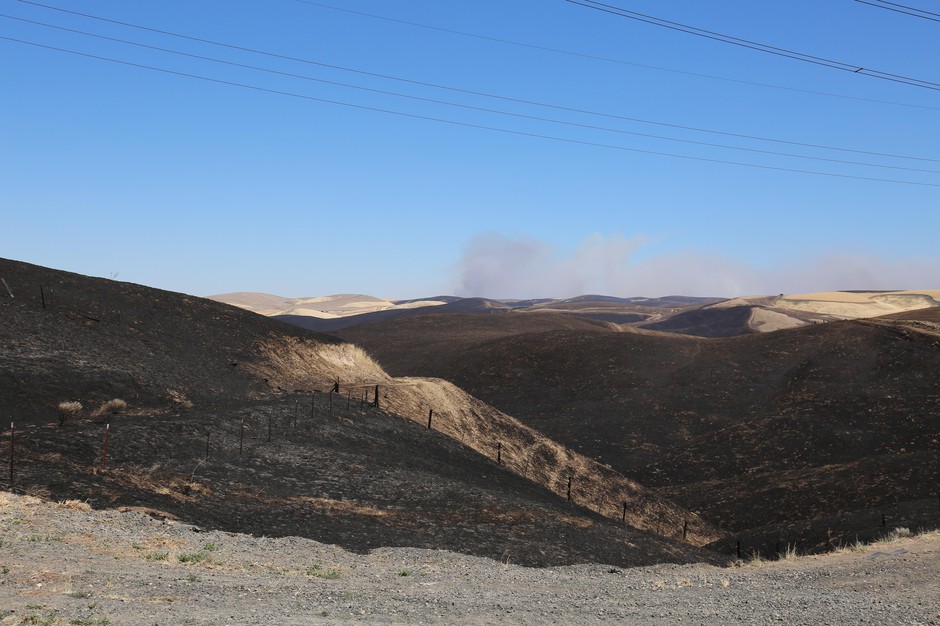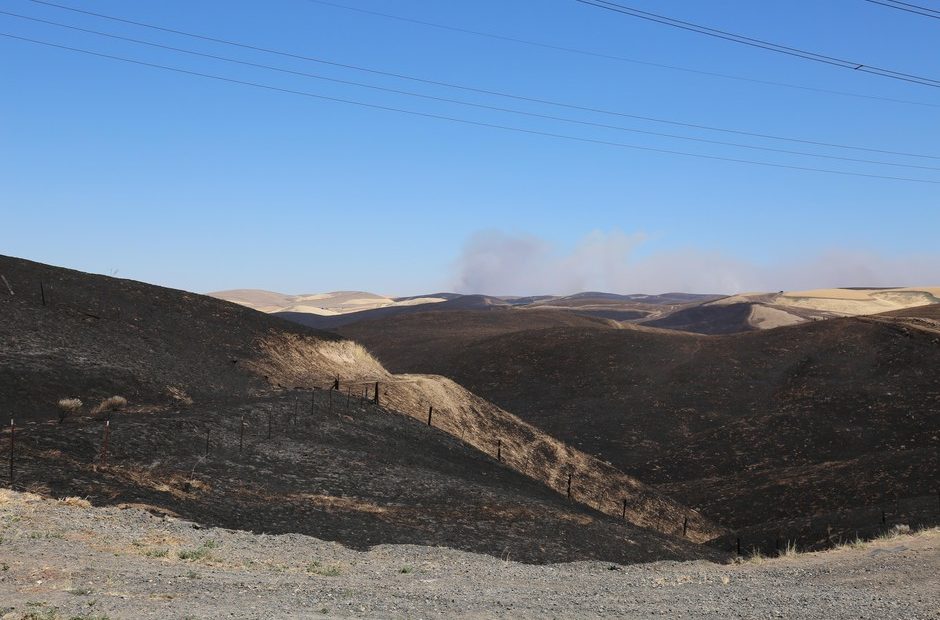
Big Oregon Substation Fire Burning Lots Of Wheat — And Exports — For Northwest Farmers
LISTEN
East of The Dalles, Oregon, the Substation Fire has charred over 50,000 acres and is still spreading. One person has died attempting to dig fire line through cropland.
A lot of that charred ground so far is golden, soft white wheat. And when grain burns, farmers can lose a lot of money – even if they have crop insurance.
Crop insurance isn’t like your average car insurance. Many times, crop insurance pays about 65 percent of a farmer’s bushels, with a price that’s set each fall.
In the Substation Fire, farmers were nearly ready to harvest – so they’ve put an entire year’s work into this crop, just to lose it right before harvest season.
“You know even if you break even, breaking even is better than taking a loss. But your potential for profit went up in smoke,” said Brent Cheyen, president of the Oregon Wheat Growers League.
So far, Cheyen and others don’t have a reliable acreage or bushel count on what’s been lost in the fire.
Ripe wheat burns hot and fast because it’s dried out to less than 10 percent moisture this time of year before it’s harvested and stored before shipping.
Most of the grain lost so far is called soft white wheat.
What Is Soft White And Where Does It Go?
Washington, Oregon and Idaho grow most of the nation’s soft white wheat – a class of wheat that has lower protein than other varieties.
Typically it’s planted in the fall, grown up a bit, goes dormant through the winter, and then starts growing again in the spring. Farmers harvest it around this part of summer.
In the Northwest, farmers can grow soft white because of the region’s mild climate. Stressed out wheat makes for higher protein.
Soft white’s lower protein is handy for a lot of countries that make things like sponge cakes, cookies, crackers and blend it with other types of wheat for noodles. The lower protein means crackers are fluffy, and cookies spread out. Try to make a fluffy cake with hard red wheat and you’d end up with a brick.
From shipping channels in the Columbia River, most of that wheat goes overseas to the Philippines, Japan, South Korea, Indonesia, China and Yemen.
This year Northwest states are set to harvest 220 million bushels of soft white wheat. One of the best years on record.
Related Stories:
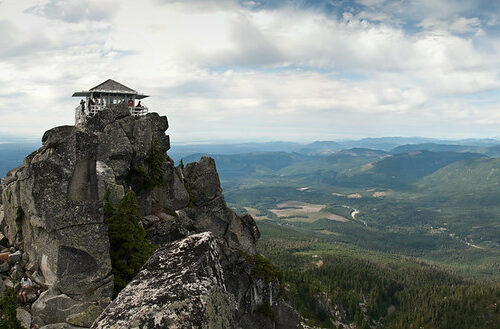
Hot, dry temperatures mean critical fire conditions for Washington
A view of the Mount Pilchuck fire lookout in Washington. (Credit: Ham Hock / Flickr Creative Commons) Listen (Runtime 1:04) Read It’s bone dry and blisteringly hot across Washington state,
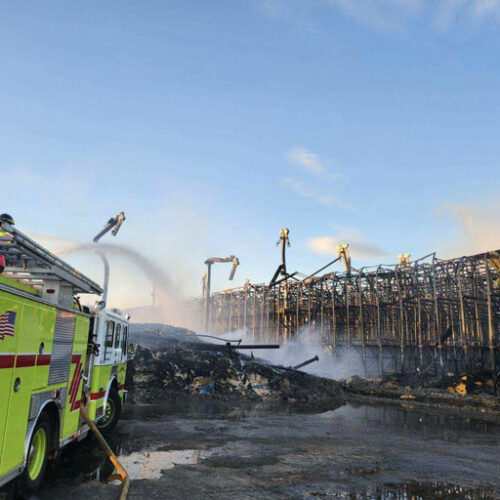
Finley warehouse has burned for 7 weeks, Benton County Commissioners tell owners to fix it faster
Hotspots at the Lineage Logistics fire in Finley, Washington, flared up Tuesday because of high winds. The fire has been burning for seven weeks. (Credit: Benton County Fire District 1)
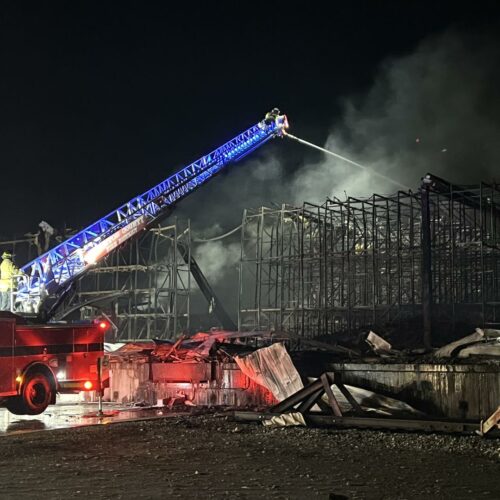
Tri-Cities’ largest warehouse fire still smoldering, spitting out potentially toxic smoke
Fire crews spray water on rubble at the Lineage Logistics fire in Finley, Washington. The fire started on April 21. (Credit: Benton County Fire District 1) Listen (Runtime 1:00) Read

